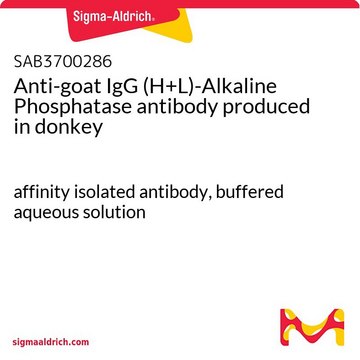MABN1840
Anti-Neuritin (CPG15) Antibody, clone A6.1
clone A6.1, from mouse
Sinónimos:
candidate plasticity gene 15, CPG15
About This Item
Productos recomendados
origen biológico
mouse
forma del anticuerpo
purified immunoglobulin
tipo de anticuerpo
primary antibodies
clon
A6.1, monoclonal
reactividad de especies
rat, human
reactividad de especies (predicha por homología)
monkey (based on 100% sequence homology), bovine (based on 100% sequence homology)
envase
antibody small pack of 25 μg
técnicas
western blot: suitable
isotipo
IgG2bκ
Nº de acceso NCBI
Nº de acceso UniProt
modificación del objetivo postraduccional
unmodified
Información sobre el gen
human ... NRN1(51299)
Descripción general
Especificidad
Inmunógeno
Aplicación
Neuroscience
Calidad
Western Blotting Analysis: 0.5 µg/mL of this antibody detected recombinant human/rat Neuritin (CPG15).
Descripción de destino
Forma física
Almacenamiento y estabilidad
Otras notas
Cláusula de descargo de responsabilidad
¿No encuentra el producto adecuado?
Pruebe nuestro Herramienta de selección de productos.
Certificados de análisis (COA)
Busque Certificados de análisis (COA) introduciendo el número de lote del producto. Los números de lote se encuentran en la etiqueta del producto después de las palabras «Lot» o «Batch»
¿Ya tiene este producto?
Encuentre la documentación para los productos que ha comprado recientemente en la Biblioteca de documentos.
Nuestro equipo de científicos tiene experiencia en todas las áreas de investigación: Ciencias de la vida, Ciencia de los materiales, Síntesis química, Cromatografía, Analítica y muchas otras.
Póngase en contacto con el Servicio técnico